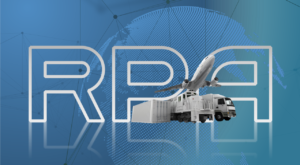Almost everyone is looking forward to the end of the pandemic and the new normal. Cliff Saran (@cliffsaran), Managing Editor of Computer Weekly, writes, “With the economy opening up, business leaders are looking at how quickly things can start returning to normal. What does normal look like?”[1] Most critics agree the new normal won’t look like the old normal. That shouldn’t be surprising since what is considered “normal” changes all the time. Deloitte executives Scott Szalony and Valeriy Dokshukin, observe, “The pandemic has had a profound and lasting impact on how work gets done, where work gets done, and the size of the workforce to get the work done. This is pervasive across all areas of an organization, from sales to manufacturing to R&D, and, in particular, finance. At the same time, some companies have invested significantly in intelligent automation in recent months, and the pace of change and adoption is accelerating rapidly. And that’s not likely a coincidence.”[2]
Saran agrees the pandemic forced many companies to make changes that permanently affect their operations going forward. He explains, “Numerous studies have shown that over the last year, processes previously requiring manual intervention were automated. Covid-19 forced many business leaders to stop making excuses about avoiding disruption while the business was ticking over nicely, to pushing forward digital transformation projects. Once automated, there is no going back.” One of the most popular automation solutions being adopted is Robotic Process Automation (RPA). In fact, Szalony and Dokshukin report, “The demand for robotic process automation is extremely high.” With so many companies adopting RPA, they ask, “You’ve decided to adopt RPA. Now what?”
RPA and Some of Its Benefits
Before getting to the “now what” of implementing RPA, for those unfamiliar with the term, let me briefly explain what it entails. RPA involves the use of software robots (aka “bots”) that carry out rules-based process instructions. Sascha Cutura (@saschacutura), Chief Executive Officer of convedo, explains, “Like machines in industrial factories in previous decades, robots have the potential to dramatically change how businesses work in the coming years. Robotic process automation uses software, to create an agile ‘digital workforce’ which mimics human processing of repetitive labor-intensive tasks. It follows rule-based business processes and interacts with systems in the same way that people do.”[3] These “labor-intensive tasks” are often called “swivel-chair work” because they require humans to move data constantly from one dataset to another dataset. Because the work is tedious, it is also error prone. Joe Labbe, Vice President of business development at KnowledgeLake, notes, “The vast majority of the data running through RPA automations originates or terminates with a document. In fact, I’d estimate that about 80% of RPA automations fall into this category.”[4] He discusses five common ways companies use RPA to enhance document processing. They are:
1. Transactional Data Entry, or Straight-Through Processing. Labbe calls “transactional data entry the mother of all unattended bot automations.” In this form of processing, Labbe notes, “Physical or virtual machines [are] tasked with performing more batch-oriented and longer running transactions. Unattended bots are custom-made to process documents that flow into the enterprise on their own timetable, and where timely and hyper-accurate data entry into downstream line of business systems is critical.”
2. Document Acquisition. Labbe notes, “Document acquisition is not always a simple task. While most document processing platforms can acquire documents from scanners, cameras, watch folders, and email accounts, this is far from an exhaustive list of the channels through which documents enter the enterprise. Many organizations are also forced to acquire documents from locations such as websites, FTP sites, EDI translators, and more. … RPA can be an incredibly powerful multi-channel document acquisition tool.”
3. A Shortcut (i.e., ‘jumpto’) to Necessary Documents. According to Labbe, “The top reason organizations give for not centralizing their document repositories or duplicating documents across line of business systems is the need to locate documents from different contexts. Meaning, accounting may need to retrieve an invoice from a supplier record within an ERP system, while an HR professional may need to view a change of life event form from within an EHRS. … However, via an RPA attended bot, a ‘jumpto’ button can easily be placed onto any screen with no changes to the application required. When pressed, this button kicks off an automation that extracts screen data to establish context and then uses that data to ‘jumpto’ the related document. … The possibilities of creating a powerful, contextually hyperlinked experience among data, documents, and system records are endless.”
4. QuickCopy. “Despite the power of machine learning and its ability to perform document auto-classification and data extraction,” Labbe writes, “many documents are still manually indexed or supplemented with metadata from line of business systems. ‘Quickcopy’ is the process by which a user opens a record in a line of business system, and via the same button described above, kicks off an automation that extracts select pieces of data from one or more application screens, and then quickly copies them to the metadata fields of the open document.”
5. Document Assembly and Forms Extraction. Labbe writes, “Document assembly and forms extraction have been around forever. By leveraging the power of RPA, any application screen(s) can easily be used as the source to assemble a document, or as the destination for data extracted from a form. … Forms extraction is really just the other side of the same coin. In this case, data is extracted from a form and inserted into the fields of an open application record. Document assembly and forms extraction are equally used by both attended and unattended bots.”
Because RPA solutions are so useful, Saran reports, in the post-pandemic normal, “Robotic Process Automation will have a role to play, as it provides the simplest route to getting different applications to work together. The robot simply replaces the keystrokes a human operator would need to do. Gartner recently reported that business leaders have a new found respect for technology.”
Implementing RPA Solutions
If you think RPA has a role to play in your organization, Cutura offers eight guidelines to use to harness the power of RPA in your business processes. Following these guidelines, your company stands a good chance its RPA implementation will be successful. Those guidelines are:
1. Define your objectives. “Before you even dip your toe into the RPA waters,” Cutura writes, “you must have a sense of what you plan to achieve with it. Your goals may include improving efficiency and productivity, moving workers to higher-priority activities and enhancing the end user experience.”
2. Find opportunities. “Once you have a clear sense of what you hope to accomplish,” writes Cutura, “begin assessing which of your processes are strong potential candidates for RPA.”
3. Establish governance. According to Cutura, “If you plan to incorporate RPA as a long-term part of your IT strategy, it needs to be aligned with your broader business objectives and initiatives.”
4. Develop a plan. “Since RPA will have a substantial effect on the rest of your organization — including employees’ roles and responsibilities — you need to anticipate the changes that will ensue once it rolls out.”
5. Run a trial. “Before deploying a full enterprise-wide RPA solution,” Cutura writes, “you should run a small pilot program or proof of concept that demonstrates the feasibility of your plan.”
6. Deploy a solution. “If your pilot has been successful,” Cutura writes, “the next step is to launch a full RPA initiative.”
7. Track your progress. “Of course,” Cutura writes, “using RPA doesn’t end once the software is pushed out to production. During the planning phases, you should have defined a clear set of metrics and key performance indicators that will allow to judge the success of the new system.”
8. Make further improvements. Cutura explains, “Like RPA software itself, your organization should learn from experience. RPA development is an iterative process, not something that can run on autopilot once deployed.”
Concluding Thoughts
There can be little doubt that RPA will be a part of the new normal in the post-pandemic business world. Although some subject matter experts list RPA as an artificial intelligence technology, others call it a gateway technology to AI. Cutura concludes, “Companies that seek to leverage technologies such as robotic process automation to improve their business processes should look beyond the simple, straightforward answers. By understanding how to use multiple enterprise automation technologies in concert, organizations can make their digital transformation initiatives more effective and gain the edge over their competitors.” As organizations transform into digital enterprises, RPA is likely to find welcoming home.
Footnotes
[1] Cliff Saran, “Apply brain power to automation,” Computer Weekly, 13 April 2021.
[2] Scott Szalony and Valeriy Dokshukin, “You’ve Decided to Adopt RPA. Now What?” CFO, 29 April 2021.
[3] Sascha Cutura, “How to harness the power of robotic process automation,” Consultancy.uk, 31 March 2021.
[4] Joe Labbe, “5 Common Ways Companies Use RPA to Enhance Document Processing,” CMS Wire, 1 April 2021.





